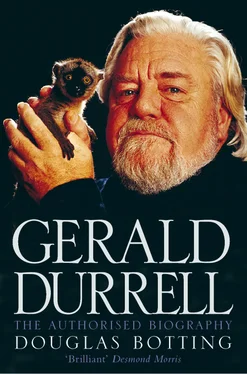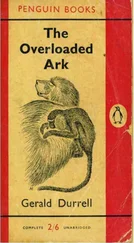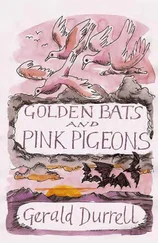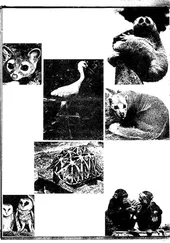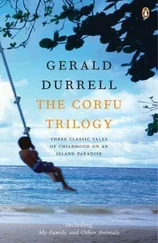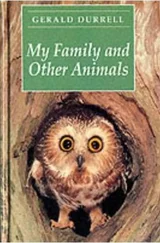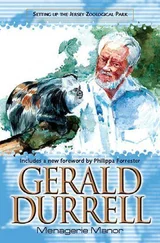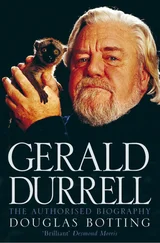It was in these early outings that Gerald got to know the Corfiot peasants of the locality, many of whom became his friends. There was the cheerful simpleton, an amiable but retarded youth with a face as round as a puffball and a bowler hat without a brim. There was rotund, cheerful old Agathi, past seventy but with hair still glossy and black, spinning wool outside her tumbledown cottage and singing the haunting peasant songs of the island, including her favourite, ‘The Almond Tree’, which began ‘ Kay kitaxay tine anthismeni amigdalia …’. Then there was Yani, the toothless old shepherd, with hooked nose and great bandit moustache, who plied the ten-year-old Gerald with olives and figs and the thick red wine of the region (well-watered to a rosy pink).
And then there was the Rose-beetle man, one of the most extraordinary characters of the island, a wandering peddler of the most extreme eccentricity. When Gerald first encountered him in the hills, playing a shepherd’s pipe, the Rose-beetle Man was fantastically garbed, wearing a battered hat that sprouted a forest of fluttering feathers of owl, hoopoe, kingfisher, cockerel and swan, and a coat whose pockets bulged with trinkets, balloons and coloured pictures of the saints. On his back he carried bamboo cages full of pigeons and young chickens, together with several mysterious sacks, and a large bunch of fresh green leeks. ‘With one hand he held his pipe to his mouth, and in the other a number of lengths of cotton, to each of which was tied an almond-size rose-beetle, glittering golden green in the sun, all of them flying round his hat with desperate deep buzzings.’ The beetles, the man mimed – for he was dumb as well as strange – were substitute toy aeroplanes for the village children.
One of the Rose-beetle Man’s sacks was full of tortoises, and one in particular struck the boy’s fancy – a sprightly kind of tortoise, with a brighter eye than most, and possessed (so Gerald was to claim) of a peculiar sense of humour. Gerald named him Achilles. ‘He was undoubtedly the finest tortoise I had ever seen, and worth, in my opinion, at least twice what I had paid for him. I patted his scaly head with my finger and placed him carefully in my pocket.’ But before setting off down the hill he glanced back. ‘The Rose-beetle Man was still in the same place in the road, but he was doing a little jig, prancing and swaying, while in the road at his feet the tortoises ambled to and fro, dimly and heavily.’
From the Rose-beetle Man Gerald obtained several other small creatures that took up residence in the Strawberry-Pink Villa, including a frog, a sparrow with a broken leg, and the man’s entire stock of rose-beetles, which infested the house for days, crawling into the beds and plopping into people’s laps ‘like emeralds’. Perhaps the most idiosyncratic of these creatures was a revolting-looking young pigeon which refused to learn to fly and insisted on sleeping at the foot of Margo’s bed. So repulsive and obese was the bird that Larry suggested calling it Quasimodo. It was Larry who first noticed that Quasimodo was partial to dancing around the gramophone when a waltz was being played, and stomping up and down with puffed-up chest when the record was a march by Sousa. Eventually Quasimodo surprised everybody by laying an egg, whereupon she grew wilder and wilder, abjured the gramophone, and finally, suddenly endowed with the gift of flight, flew out of the door to take up residence in a tree with a large cock bird.
With Gerald rapidly turning into part of the fauna of Corfu, Mother decided it was time he had some sort of education. George Wilkinson was hired for this thankless task. Every morning he would come striding through the olive groves, a lean, lanky, bearded, bespectacled, disjointed figure in shorts and sandals, clutching bundles of books from his own small library, anything from the Pears Cyclopaedia to works by Wilde and Gibbon. ‘Gerry really did everything he could to escape lessons,’ Nancy recalled. ‘He was utterly bored with lessons and with George as a tutor.’ The only way George could gain his attention was to introduce animals into everything he taught, from history (‘Good heavens, look. A jaguar,’ remarked Christopher Columbus as he stepped ashore in America for the first time) to mathematics (‘If it took two caterpillars a week to eat eight leaves, how long would it take four caterpillars?’). It was George who persuaded Gerald to start a nature diary, meticulously noting everything he saw and did every day in a set of fat blue-lined notebooks – a compilation sadly later lost.
Gerald was never at his best within the confines of a room, but outside – whether in a herbaceous border in the garden or a swamp full of snakes – he was a person transformed. Quickly realising this, George instituted a programme of al fresco lessons, out in the olive groves or down by the little beach at the foot of the hill overlooking Pondikonissi (Mouse Island). There, while discussing in a desultory way the historic role played by Nelson’s egg collection at the Battle of Trafalgar, they would float gently out into the shallow bay, and Gerald would pursue his real studies – the flora and fauna of the seabed, the black ribbon-weed, the hermit crabs, the sea-slugs slowly rolling on the sandy bottom, sucking in seawater at one end and passing it out at the other. ‘The sea was like a warm, silky coverlet,’ wrote Gerald later, ‘that moved my body gently to and fro. There were no waves, only this gentle underwater movement, the pulse of the sea, rocking me softly.’
George Wilkinson was an aspiring novelist, but Gerald was so bored by his English lessons that one day he suggested he should write a story of his own, just like his brother Larry (then busy on his second novel, The Black Book ). Entitled ‘The Man of Animals’ and written in a wobbly and erratic hand and eccentric, nursery school spelling, the story relates, with uncanny prescience, the adventures of a man who was remarkably like the one Gerald would become:
Right in the Hart of the Africn Jungel a small wite man lives. Now there is one rather xtrordenry fackt about him that is that he is the frind of all animals. Now he lives on Hearbs and Bearis, both of which he nos, and soemtimes, not unles he is prakticly starvyng, he shoot with a bow and arrow a Bird of some sort, for you see he dos not like killing his frinds even wene he is so week that he cann hardly walk!
One of his favreret pets is a Big gray baboon, wich he named ‘Sotine’. Now there are surten words this Big cretcher nows, for intenes if his master was to say ‘Sotine I want a stick to mack a Bow, will you get me one?’ then the Big ting with a nod of his Hede would trot of into the Jungel to get a bamboo fo the Bow and Arrow. But before Brracking it he would bend it so as to now that it would be all right, then breacking it of he would trot back to his master and give it to him and wight for prase, and nedless to say his master would give him a lot …
So far, so good. But now, obviously not averse to experimental writing, the youthful author suddenly switches from the third to the first person, and the adventure continues not from the narrator’s but from the Man of Animals’ point of view.
One day wile I was warking in frount of my porters in Africa a Huge Hariy Hand caught my sholder and I was dragged of into the Jungel by this unseen figer. At last I was put down (not to gently) and I found my self looking into the eyes of a great baboon. ‘Holy mackrarel,’ I egeackted, ‘what the devel made you carry me of like this, ay?’ I saw the Baboon start at my words and then it walked over to the ege of the clearing, beckning me with a Big Hairy Hand …
As well as writing extended narratives in those early Corfu days, Gerald was also trying his hand at verse. At first this shared the simplicity – and the spelling – of his more ambitious works, but combined his passion for natural history with the conventions of pastoral verse:
Читать дальше
